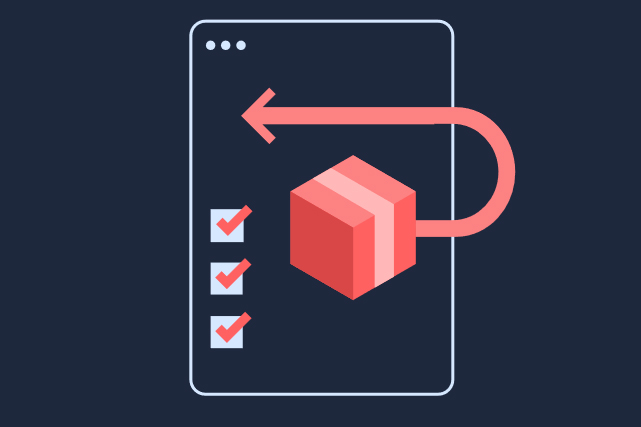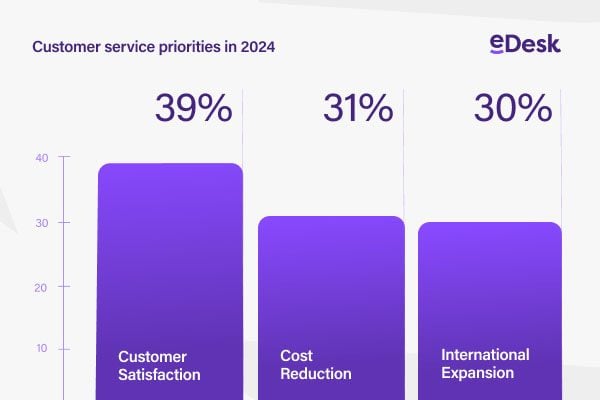A new Return to Sender report from Forter helps paint a better picture of how different types of return fraud can affect your business. There are several different types of malicious return fraud to watch out for. All of which are equally detrimental to your business’s bottom line. Here are some of the most common scenarios:
- Price tag switching
Price tag switching is when a customer switches the price tag on an expensive item with one from a cheaper item, buys the item at a lower cost, and returns the item after switching the price tags back. This way, they end up pocketing the difference.
How to prevent it: Price tags that aren’t easily removed (no stickers or interchangeable parts) can help with price tag switching. Staff should also make sure that the item on the screen matches what is being purchased when it’s scanned. - Returning shoplifted items
Returning shoplifted items is a fairly self-explanatory tactic. The customer steals items in hopes of returning them at a later date for a refund on an item they paid nothing for.
How to prevent it: Simply requiring a valid receipt for any return should be enough to stop these fraudsters in their tracks. - Receipt fraud
Receipt fraud is similar to returning shoplifted items in the sense that it involves stolen merchandise.
However, to avoid the problem of not having a receipt, the customer attempts to return it with an invalid receipt. This could be fabricated, stolen, or even an older receipt.How to prevent it: SKU’s on receipts can help with preventing receipt fraud. If the SKU doesn’t match the item, then the return should not be allowed. If SKU’s aren’t available, training employees to look for signs of a fabricated or invalid receipt can help, although it won’t entirely eliminate the problem.
- Shoplisting
The fraudster obtains a receipt and uses it as a “shopping list”. By obtaining the items listed on a perfectly valid receipt, they can then attempt to return brand new items on the receipt for a refund.
How to prevent it: Implementing a time limit in your return policy will stop fraudsters from using older receipts to return new items. - Renting/Wardrobing
A common tactic used by customers in the fashion space, wardrobing is when a customer purchases an item with the intention of using it a few times before returning it and passing it off as brand new.
Think of someone purchasing an outfit specifically for an event. They have no use for the outfit beyond that event, so it ends up being returned despite being used. Wardrobing is often considered harmless by those who commit it, but it’s still fraud nonetheless.
How to prevent it: Closely examining items when they’re returned for any signs of use can help here. Also, when talking about clothing, the use of tags that would make it difficult to wear the item without first removing the tag can stop fraudsters in their tracks.
Addressing the Types of Return Fraud
When it comes to return fraud, there are many tactics used by fraudsters that retailers and other businesses need to watch out for.
However, by taking certain steps and precautions, a significant amount of return fraud can be prevented.
Normally, return fraud prevention begins with a clear and easily accessible return policy. By updating and revisiting your return policy, you can ensure that you’re giving yourself the best chance of preventing these tactics from being used on you.
There are also services, such as Forter’s Policy Abuse Protection, which can help prevent return fraud by tailoring fraud prevention to your specific business and policies.
At the end of the day, these are the tactics to be on the lookout for along with some strategies to prevent them. Make sure you put them to good use and protect your bottom line.










2 Responses
I wonder if anyone else has been getting a lot of eBay return fraud, where customer submits Royal Mail tracking for a return that has nothing at all to do with their purchase eg we have shipped to London and the tracking number provided maybe Newcastle – sometimes the return is commenced before the goods have even been delivered.
They appear to have tracking that indicates its been delivered to the postal area but there is nothing to say it was ever delivered here. Speaking to eBay, they said they said when managed payments was active, fraud would be less of a problem but we couldn’t see how a different payment method would be helpful in this scenario. The tracking number should at least be unique globally accross all of eBay, that would at least mean the scammer would need a large pool of tracking numbers to a given postal town.
If you google ebay return fraud royal mail, there is an article in the guardian from 2019 describing this problem so eBay haven’t plugged it yet.
Following up to my own comment, I also see Tamebay have covered this themselves:
https://channelx.world/2019/01/ebay-scammers-exploit-return-labels.html